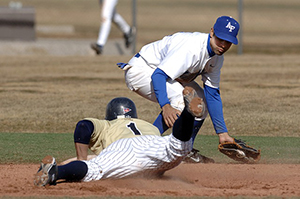Do You Play Baseball or Softball?
I enjoy treating all types of injuries but if I had to say which are my favorite, my answer would be baseball related injuries. I often tell my patients this and it is true. I have experienced my own set of injuries from playing baseball and I have an in depth knowledge of baseball and understand the mechanism associated with throwing and batting. Baseball related injuries most often involve the shoulder and more specifically the rotator cuff. Elbow injuries, low back pain, and calf injuries-due to the sprinting from base to base and then stopping and sprinting for a ball quickly from a still position, are common as well.
I have had great success treating shoulder injuries with chiropractic care because rotator cuff injuries are most often caused by a muscle imbalance in the shoulder, neck or back. The muscle imbalance is usually caused by a structural misalignment, subluxation, somewhere else in the neck, shoulder, or spine. Athletes are usually told that it’s a repetitive stress syndrome but it is really caused by repetitive motion that is imbalanced. Your body is actually getting injured slightly with every movement until we finally are in so much pain that we can no longer continue. That’s how we get injured. If are bodies are aligned properly and are muscles are functionally in a balanced pattern properly, then we should be able to perform repetitive motions, like throwing in baseball without injury to the area. This is how I treat rotator cuff strains and sprains in my office. Chiropractic adjustments provide the structural foundation allowing the body to function properly, which leads to muscle balance. With the adjustments I will provide a way to strengthen and stretch the area to avoid the injury from returning. I have seen many patients recover quicker and recover completely under my care. Other therapies I utilize are physiotherapy, massage therapy, and a taping therapy called kinesiotape. Kinesiotape is a tape that is applied to the injured are and provides muscle balance and usually allows the athlete to continue to compete while wearing the tape.